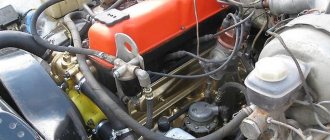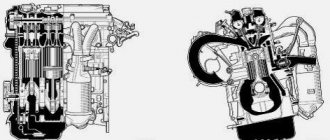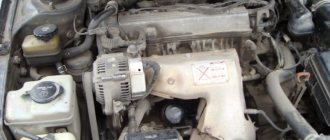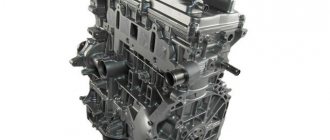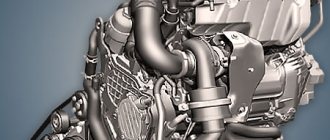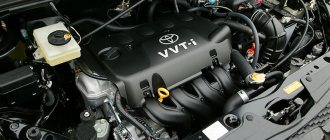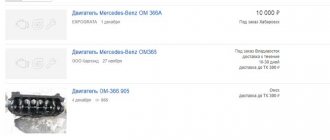Characteristics
- The 3S-FE engine has the following technical characteristics:
- Cylinder capacity – 1998 cc
- Power – from 115 to 130 hp.
- Torque – 186 Newtonometers at 4400 rpm
- Compression ratio – 9.8 to 1
- Valves per cylinder – 4
Due to the lack of electronics (with the exception of the EFI electronic injection system) and low power, the unit turned out to be extremely durable. The service life of the 3S-FE engine without major repairs reaches 300 thousand kilometers, and in the absence of high loads, there are often cases of trouble-free use of this gasoline engine up to 500 thousand. Even now, many years after its discontinuation, you can find cars with this engine not subject to capitalization.
Despite the fact that the production years of the engine with the factory coding 3S-FE are considered from 1986 to 2001, in 1996 there was a global modernization of the engine, aimed, among other things, at reducing noise. The changes had a negative impact on its maintainability. If earlier repairs could be done in any workshop, or even independently, then after changes were made to the design, the motor became practically unmaintainable. To extend the service life of these modifications, the manufacturer categorically recommends using oil with a viscosity of 5W-30 instead of the previously used 5W-50 oils.
In order to reduce the weight of the power unit, an aluminum cylinder head was installed on the cylinder block made of cast iron on all modifications. For complete lubrication, the engine required 3.9 liters of oil, which is relatively little. But owners of cars with this engine note high oil consumption on a worn engine. In order to delay the inevitable, namely major repairs, drivers switch to oils with high viscosity, for example, 10W-30, whose consumption is 1 liter per 1000 km.
Consumption
Cars on which the 3S-FE engine was installed cannot be called economical in modern realities. The current use of electronics by manufacturers, reducing cylinder volumes without loss of power due to modern technologies, including the use of direct injection, has made it possible to significantly reduce fuel consumption. But at the time of release, the engine did not stand out among its competitors in terms of the amount of gasoline consumed per 100 km.
In Europe, 3S-FE was installed on Avensis only before restyling. In Russia and after the update
The 3S-FE engine is not demanding on the octane number of fuel. He uses both 95 and 92 gasoline equally well. Naturally, fuel consumption directly depends on the weight of the car and gearbox. For example, the first generation Toyota Avensis, on which this engine is installed, in combination with a five-speed manual transmission, consumes 11.2 liters in the city and 6.5 on the highway. The frameless crossover Toyota RAV4 XA10 with the same engine, but permanent all-wheel drive, has higher consumption - 12.5 liters in city mode and 7.9 liters outside the city. The same SUV, but with an automatic transmission with four gears installed, will not have to be refueled much, but more often - 8.1 at high speed and 12.6 liters in populated areas.
Modifications
Also in the third generation of the S-series of Toyota engines, in addition to the 3S-FE, the concern used other modifications of this engine. In addition to the most budget carburetor 3S-FC, which was extremely rare and was used in the Australian GM Holden Apollo and minimal configurations of the Camry, the following versions stood out:
The 3S-FSE was the first Toyota engine with direct fuel injection and the use of the VVT-i variable valve timing system, which is still used today. Despite the high power of 150 horses and innovation, the engine did not earn a good reputation and suffered from regular breakdowns. The 3S-GE was directly a modification of the FE with improved performance. It was developed with the participation of Yamaha, and was distinguished by the absence of the problematic crankcase gas recirculation system, like other versions. The motor had three revisions. The first was produced until 1989, and had modifications from 135 to 160 hp.
The second generation, produced until 1993, increased its power to 165 horses. And it had 180 hp. In the fourth generation, enlarged intake and exhaust channels were used and the camshafts were changed. Thanks to this, power increased to 200 horsepower. The latest fifth version used Dual VVT-I and 210 horses under the hood.
Cooling system
The 3S-GTE modification, built on the basis of the 3S-FE, differed from its brother in the presence of a turbocharger, and had four versions with different characteristics. They were replaced in parallel with versions of the less powerful FE, and increased power from generation to generation. The first version had a T-VIS variable intake manifold. This, coupled with the CT26 turbine, allowed the engine to develop 185 hp. The same turbine and some other modifications increased the power in the second version to 220 horses.
The third revision eliminated the T-VIS, and the turbine was replaced with a CT20b. Engine power was 245 horsepower. The fourth version, 3S-GTE, became the longest-living engine among the 3S engines. It remained in demand until 2007 due to its high power of 260 hp. This was achieved by replacing the camshafts.
What models was it installed on?
The long production life of the 3S-FE engine and excellent performance determine its use in a large number of Toyota cars. The engine was most widespread in its homeland in Japan. In cars for exclusively domestic use, it was installed on the atypical Vista hardtop, the Town Ace minivans and the Toyota Nadia, consonant with the Russian name, as well as the Caldina station wagon.
Karina E
In the world market it was used on numerous cars built on the basis of Carina and Corona, including European minivans Toyota Gaia and Picnic. The SUV RAV4, the sporty Celica and the Toyota Camry business sedan were not left out.
Description of the 3S FE motor
With the advent of distributed electronic injection, a version of the 3S FE injection engine was developed. The design of the 3S engine was so reliable that its modification was installed “on everything that drives,” that is, on almost all Toyota models from 1997 to 2001. releases.
Cooling system
By default, S3 and all its modifications are “million-dollar” engines with a corresponding mileage resource.
Drive attachments from one timing belt
Explanation of markings
In the Russian Federation, motor designations are regulated by the domestic standard GOST R53638. Western and Asian manufacturers use their own markings, and Nissan and Toyota have the most informative markings, so the Japanese 3S FE DOHC16V 2.0 engine is deciphered as follows:
- 3 – design solution of the internal combustion engine, in this case the volume is about 2 liters;
- S – a series of engines with in-line cylinders and multiple fuel injection;
- F – 4 valves on each cylinder;
- E – EFI injection system (electronic type);
- DOHC – two camshafts as a drive, rotation is transmitted to one of them from the crankshaft by a timing belt, to the second by a gear from the previous camshaft;
- 16 V – hydraulic gap compensation;
- 2.0 – internal combustion engine volume.
Engine cylinder block
A series with one letter index after the first digit indicates that the internal combustion engine was developed before 1990. The main design features of this type of internal combustion engine are:
- the pump is bolted to the cylinder block and rotates by a belt drive;
- the axial play of the cast iron crankshaft is adjusted by thrust semicircular washers inside the main bearing (middle), the adjustment procedure is contained in the official manual;
- the system was designed before 1990, that is, according to old safety standards, it can be operated on AI-92 gasoline;
- Initially, the manufacturer recommended the use of 5W50 oil; after 1996, Toyota cars came off the factory assembly line with 5W30 lubricant;
- the design of the valve drives was not fully developed by the designers from the beginning; to adjust the clearance parameters, you will have to pull out the shafts, throwing off the phase settings, select washers according to their thickness, and assemble the components in the reverse order;
- it is physically impossible to dismantle the intake manifold separately from the cylinder head;
- the exhaust manifold is protected by a thermal shield
Lubrication system
Exhaust manifold
Otherwise, the design of the 3S-FE engine is quite reliable; it is considered more economical in comparison with the previous 3S carburetor engine.
Service
Like any other engine, the Toyota 3S-FE engine requires timely maintenance. The regulations are specified by the manufacturer in the instruction manual. Every 10 thousand kilometers it is necessary to change the engine oil with the appropriate filter. After every 20,000, it is necessary to adjust the valves, replace attachment belts, EGR valve and spark plugs. At intervals of 40 thousand km, the condition of the fuel line, gas tank cap and cooling system pipes is monitored, the fuel and air filters are changed, and replaced with new coolant. At 100,000 it is necessary to replace the timing belt and lambda probe. And the manufacturer’s recommendations for replacing the battery and exhaust manifold every year, although they look quite strange, require monitoring of these components.
Toyota Celica T200
Radiator
The radiator plays an important role in the operation of the 3S-FE engine cooling system. The core of the part is cleaned using a jet of water from a hose under pressure, keeping the hose at a safe distance so as not to damage the unit.
Coolant replacement
To check, a special radiator tester is used; when checking, the tool must be positioned at an angle of at least 30 degrees. The test result shows whether the valve opens under the pressure created by the uniform movement of the tool piston. If the valve does not open under pressure, the cap needs to be replaced. Nominal opening pressure: from 0.75 to 1.05 bar, minimum allowable – 0.6 bar. If the opening pressure is too low, the part plug should also be replaced. The cooling system needs to be checked for fluid leaks by connecting a tester via a hose to the neck. After warming up the power unit, the pressure should be 1.2 bar and maintain the level. A drop in pressure level indicates a leak.
Coolant replacement
Problems and disadvantages
Despite its reliability, the Toyota 3S-FE engine, like any other, had its problems. The version before 1996 had a major problem with very high noise, which caused trouble for the driver only in terms of comfort. This internal combustion engine is characterized by contamination due to the low-quality fuel used. For the same reason, there was a problem with electronic injection.
In modifications after 1996, problems were associated with the design of the connecting rods, increased load on the timing belt and high fuel consumption, which drivers were unable to reduce. As already noted, this version of the engine could not be repaired and the entire unit required replacement.
Minivan Toyota Ipsum right-hand drive, left-hand drive – Toyota Picnic
Tuning
The most popular way to increase the power of a Toyota 3S-FE engine is to install a turbine. In addition to this, the crankshaft and some attachments are changed. A new fuel pump and a newly tuned fuel system will increase power characteristics to 200 hp.
The second option is to install a new direct-flow exhaust and exhaust manifold and replace part of the mounted one. The characteristics will increase by only 20 “horses”, but the costs will be much lower than in the first case. Another advantage of this method is that there is no need to disassemble the internal combustion engine.

